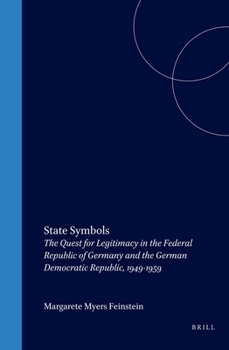< Back to Search Results
State Symbols: The Quest for Legitimacy in the Federal Republic of Germany and the German Democratic Republic, 1949-1959
After World War II Germans not only had to rebuild, they had to redefine their national political identity as well. This book traces how state symbols such as national colors, anthems, holidays, capital cities, and postage stamps were used to legitimize the two Germanies from 1949 to 1959. Although the Federal Republic of Germany and the German Democratic Republic (GDR) developed distinct post-war identities, the one cannot be understood apart from the other, for they were in direct competition to define the same state symbols. The study of symbols offers valuable insights into the realms of identity formation and of politics, that is, how symbols can promote political integration. By examining the creation of state symbols and the processes by which they were established in the public realm, Feinstein evaluates the extent to which German political culture overcame the Nazi past to legitimize both a republican and a socialist system. This book is especially relevant to scholars who want to understand the common ground upon which the citizens of today's unified Germany can construct a shared identity.
Format:Hardcover
Language:English
ISBN:0391041037
ISBN13:9780391041035
Release Date:September 2001
Publisher:Brill
Length:280 Pages
Weight:1.32 lbs.
Dimensions:1.0" x 6.5" x 9.2"
Customer Reviews
0 rating





